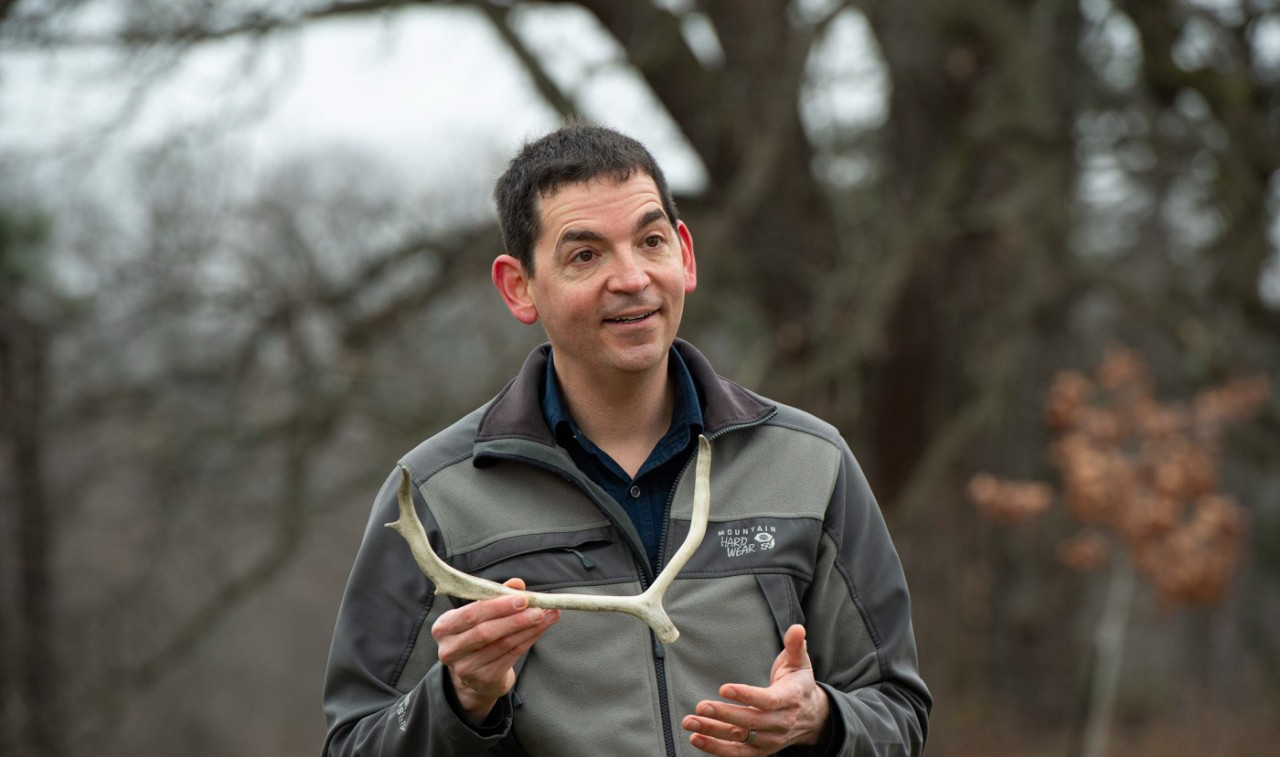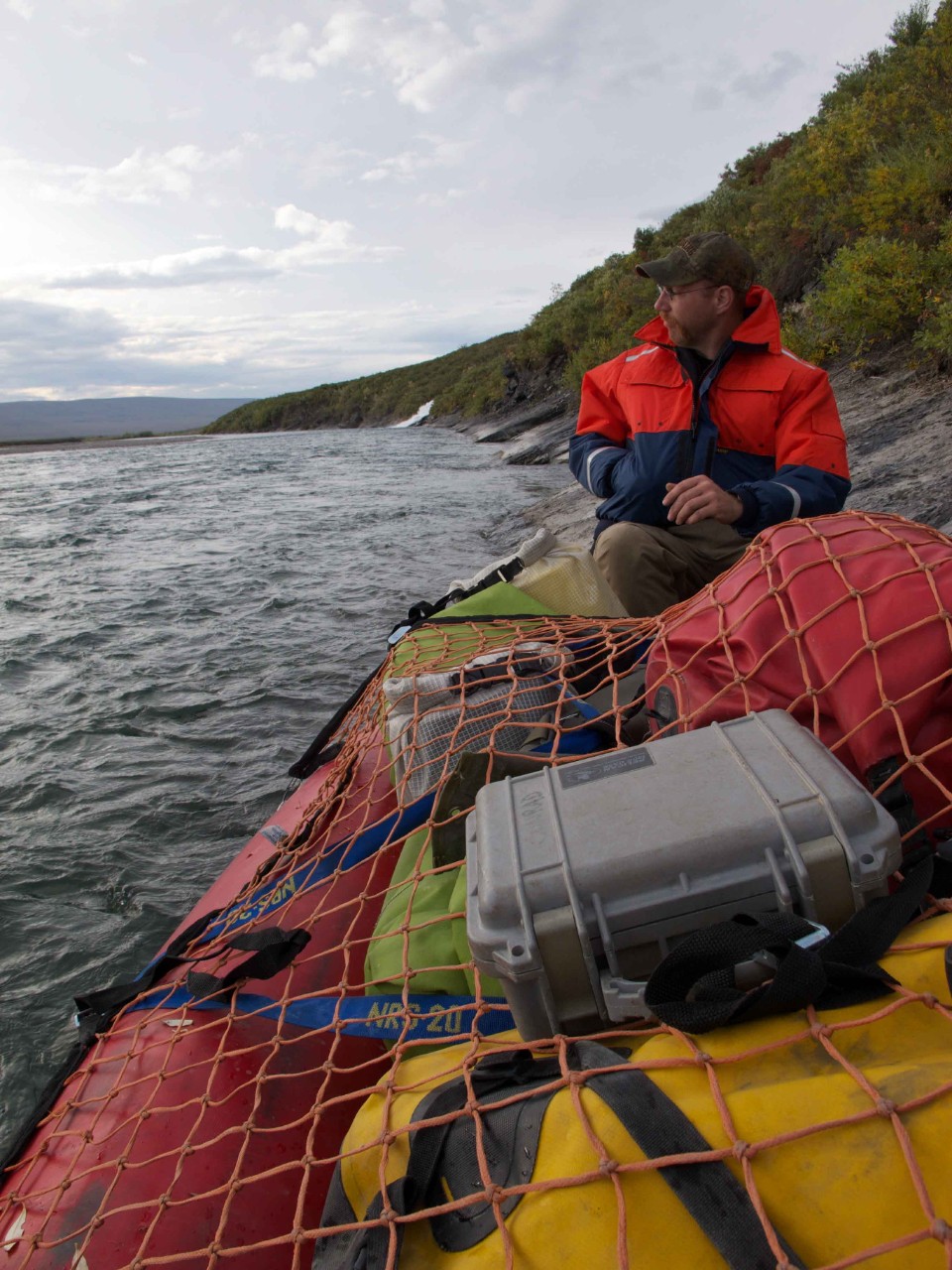
Caribou have been using same Arctic calving grounds for 3,000 years
Epic migration leads caribou to same part of refuge to give birth every spring
Caribou have been using the same Arctic calving grounds for more than 3,000 years, according to a new study by the University of Cincinnati.
Female caribou shed their antlers within days of giving birth, leaving behind a record of their annual travels across Alaska and Canada’s Yukon that persists on the cold tundra for hundreds or even thousands of years. Researchers recovered antlers that have sat undisturbed on the arctic tundra since the Bronze Age.
“To walk around the landscape and pick up something that’s 3,000 years old is truly amazing,” said Joshua Miller, an assistant professor in the Department of Geosciences at the University of Cincinnati.
He has been leading summer expeditions to the Arctic National Wildlife Refuge since 2010, using rafts to navigate remote rivers to search for caribou antlers exposed on the tundra.
“We think about having to dig down into the soil to find that kind of ecological history, but on the Coastal Plain, the vegetation grows extremely slowly,” Miller said. “Bones dropped by animals that lived dozens or even hundreds of generations in the past can provide really meaningful information.”

UC assistant professor Joshua Miller uses isotopic analysis of shed antlers to track the annual migration of caribou. Photo/Colleen Kelley/UC Marketing + Brand
The study demonstrates how important the area is for an animal that native Alaskans and Canadians still depend on for sustenance, even as energy companies seek to exploit oil and gas resources in this protected area.
The Biden Administration in 2021 suspended drilling leases in the Arctic National Wildlife Refuge, the largest tract of undeveloped wilderness in the United States.
“We know this region of the Arctic National Wildlife Refuge has been an important area for caribou for millennia,” Miller said. “That should give us pause on how we think about those landscapes.”
The study was published in the journal Frontiers in Ecology and Evolution.
It is amazing to think that the oldest of the antlers found in our study were growing approximately the same time Homer was penning ‘the Iliad’ and ‘the Odyssey.’
Patrick Druckenmiller, University of Alaska Museum of the North
Barren-ground caribou undertake nature’s longest overland migration, traveling as far as 800 miles each year to reach their spring calving grounds in the Arctic National Wildlife Refuge and Canada’s Ivvavik National Park. The largest herd in this area, named for the Porcupine River, numbers in the hundreds of thousands of animals.

Researchers traveled rivers by inflatable raft to survey the Coastal Plain for shed caribou antlers in Alaska's Arctic National Wildlife Refuge. Photo/Joshua Miller
Scientists think caribou use these areas because they have fewer predators and offer seasonal vegetation near places where they can avoid the worst of the mosquitoes.
“The mosquitoes are horrible,” Miller said. “You get swarmed — literally covered in them. They can do significant damage to a young calf.”
Whatever the reason, the antlers they leave behind provide a physical record of their epic yearly travels that researchers can unlock through isotopic analysis.
Caribou antlers, like those of elk, deer and moose, are made of fast-growing bone that the animals shed each year and regrow the following year.
“It is amazing to think that the oldest of the antlers found in our study were growing approximately the same time Homer was penning ‘the Iliad’ and ‘the Odyssey,’” study co-author Patrick Druckenmiller said.
He is director of the University of Alaska Museum and professor of the Department of Geology and Geophysics at the University of Alaska Fairbanks. Eric Wald from the U.S. Fish and Wildlife Service also co-authored the study.

UC assistant professor Joshua Miller uses shed antlers to track the annual migration of caribou. Photo/Lucian Provines
Exploring the Arctic
The antler surveys in the vast expanse of the Arctic refuge require meticulous logistical planning, Miller said. Small planes deposit researchers and their gear deep in the interior, where they have to be watchful for grizzly and polar bears. They pilot rafts to the Beaufort Sea, conducting a grid search of suitable caribou habitat identified in advance using aerial photography.
“We search for antlers along old river terraces, walking back and forth, covering every inch of habitat to find those ancient treasures,” Miller said.

Researchers slept in tents surrounded by a portable electric fence to defend against polar and grizzly bears. Photo/Joshua Miller
While male caribou antlers span four feet and weigh more than 20 pounds, female caribou antlers are much smaller. The antlers contain nutrients such as phosphorus and calcium that are important to plants and animals.
The dropped antlers create “nutrient sinks,” which could have a profound effect on the area’s vegetation. Miller said the caribou’s migration serves as a nutrient “conveyor belt” that might even draw caribou back to reap the benefits of this fertilizer in a reinforcement loop.
Caribou and other mammals are known to chew on dropped antlers for their valuable minerals. This could be an important dietary supplement for new caribou moms.
“We’d like to know to what degree this conveyor belt influences why caribou are going there in the first place,” Miller said.
The study was supported by the U.S. Fish and Wildlife Service, the National Geographic Society, the National Science Foundation, the Wildlife Society and the UC Office of Research.
Miller said the Arctic is warming faster than other parts of the globe. Parts of the Arctic that were once barren tundra are sprouting new spruce forests.
“We were in Arctic Village this summer, just south of the calving grounds, talking to elders about the changes they have seen,” Miller said. “Where once it was open tundra, large stretches of this barren ground are now full of trees. What will happen to the barren-ground caribou as this habitat gets converted into forest?”
Featured image at top: UC paleoecologist Joshua Miller can track the yearly movement of caribou using their shed antlers. Photo/Colleen Kelley/UC Marketing + Brand

UC paleoecologist Joshua Miller uses isotopic analysis to track the movement of both living and long-extinct animals across the landscape. Photo/Colleen Kelley/UC Marketing + Brand
Impact Lives Here
The University of Cincinnati is leading public urban universities into a new era of innovation and impact. Our faculty, staff and students are saving lives, changing outcomes and bending the future in our city's direction. Next Lives Here.
Related Stories
Caribou have been using same Arctic calving grounds for 3,000 years
February 8, 2023
Caribou have been using the same Arctic calving grounds for more than 3,000 years, according to a new study by the University of Cincinnati. Female caribou shed their antlers within days of giving birth, leaving behind a record of their annual travels across Alaska and Canada’s Yukon that persists on the cold tundra for hundreds or even thousands of years.
Scientists craft bold plan to unlock secrets of RNA
May 16, 2024
UC Vice President for Research Patrick Limbach is a key figure in the National Academies’ massive undertaking to sequence RNA in the next 15 years.
UC professors named scientific society fellows
June 7, 2024
Three University of Cincinnati professors were named to the 2023 class of American Association for the Advancement of Science Fellows, a distinguished lifetime honor within the scientific community. From UC's College of Arts and Sciences, Carlton Brett, a professor in the department of geosciences, and George Uetz, a biological sciences professor, were honored. Dionysios Dionysiou, a professor of environmental engineering in the College of Engineering and Applied Science, was honored posthumously.
